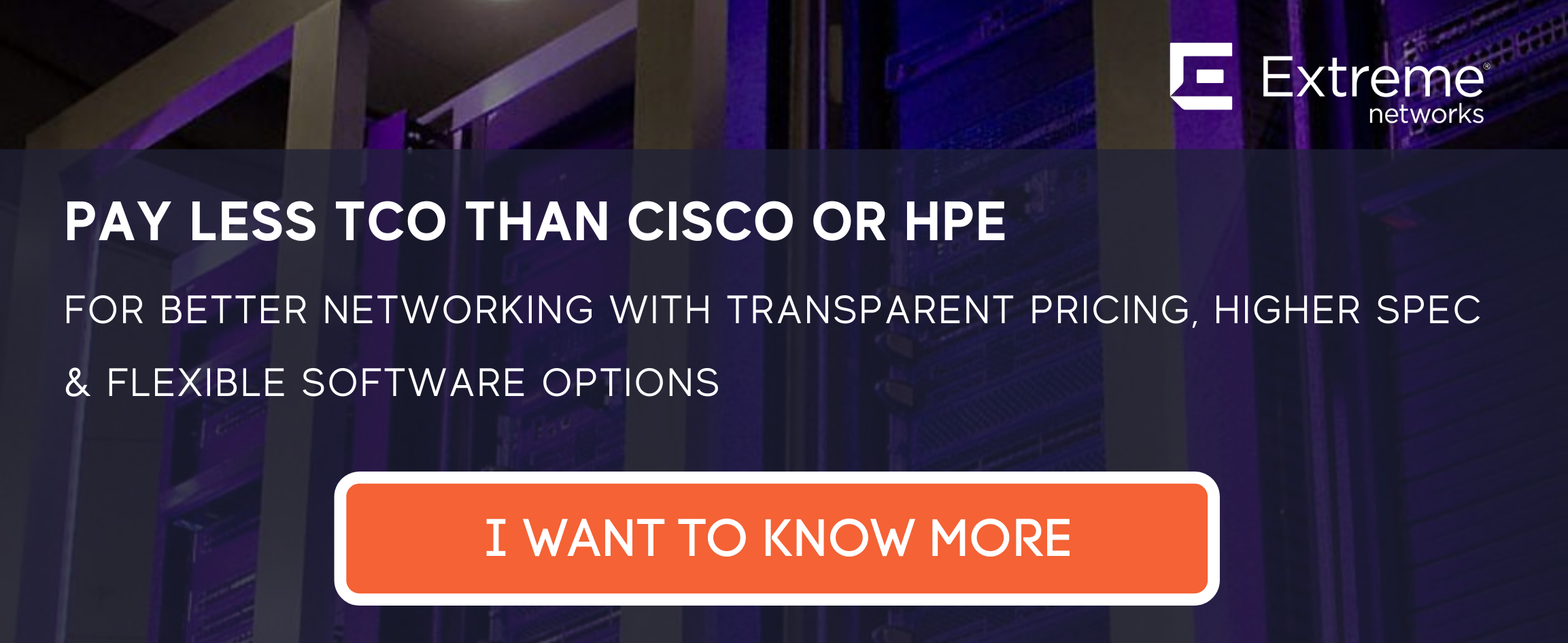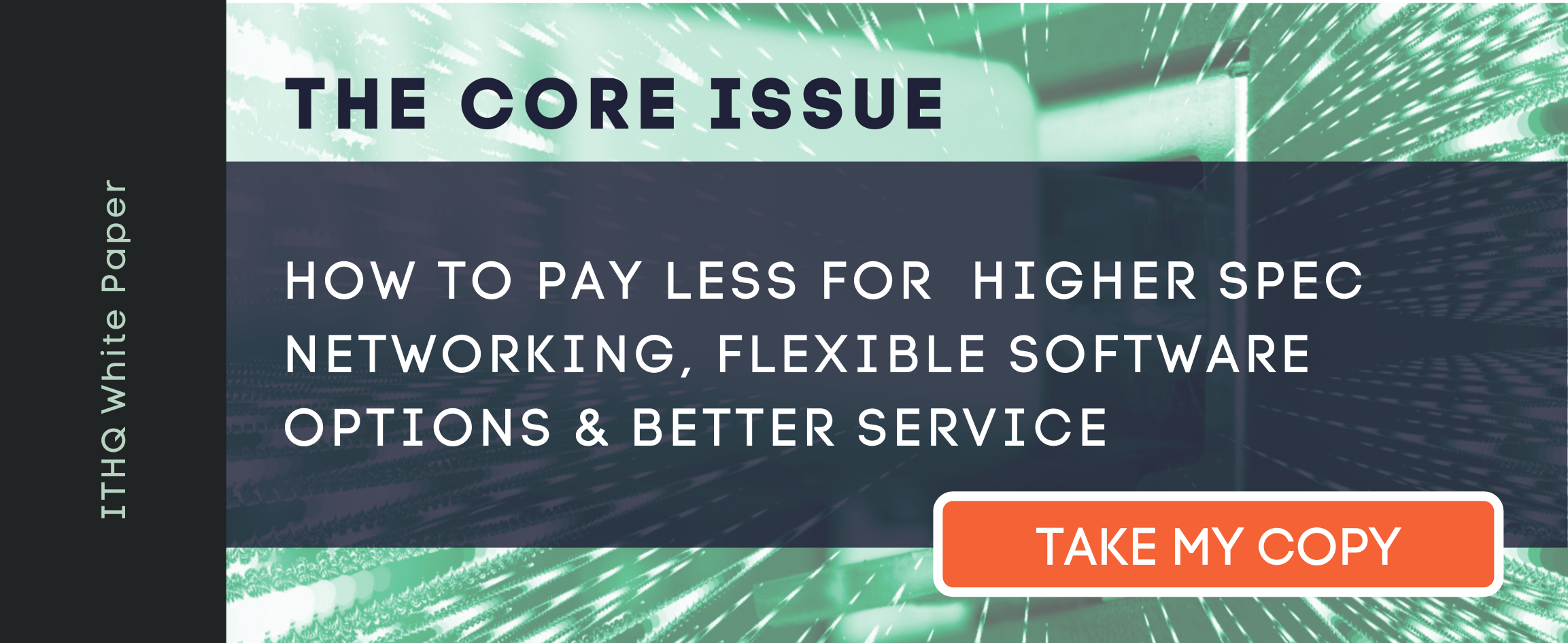London, UK | 020 3997 7979
Why are businesses saying no to Cisco as the 6500 series reaches EOL?
02 December 2020 | ITHQ writer
Investors before customers?
Cisco, once the go-to for core infrastructure all over the world, is falling out of favour. A few years ago, the mantra for many IT leaders was, ‘You can’t get in trouble for buying Cisco.’
According to our own research into customer sentiment, including interviews with former Cisco customers and forum posts, this is shifting to, ‘ABC: anything but Cisco.’ As Cisco retires its Catalyst 6500 series, we look at why this might be the case.The reasoning behind this shift in customer sentiment boils down to four clear points:
- Cisco are demonstrating self-interest over customer interest
- Innovation is less important than dominating the market
- Pricing and licensing are overly complex and geared towards Cisco
- Customer loyalty is being enforced rather than earned
During 2020, aside from announcing EOL for its Catalyst 6500 Series of products and services, Cisco pushed out its subscription model further and also overhauled its training and cert program. Price rises are being felt, with customers and Gartner highlighting confusing payment and service models. In this article, we look at how Cisco's new business model could be damaging customer experience.
Self-interest over customer interest
Cisco has lost some high-profile customers recently including The Pentagon, to HPE (Aruba). Yet its financials show revenue remains stable.
In August 2020, despite its stability, it was widely reported that Cisco was planning cuts of $1 billion, mainly in research and development.
Robbins said: ‘We’re going to rebalance our R&D investment to focus on key areas that will position us well for the future.”
In a world rapidly transforming digitally, cutting $1 billion in R&D seems counterintuitive. Meanwhile, Robbins also said that 78 percent of total software revenue is now sold as subscriptions, beating its target of 66 percent.
Cisco makes a big deal about its CX program yet in 2018, when it was in the process of formulating its new transformation strategy, between 200 and 300 people were axed from its Customer Experience (CX) team via one-to-many email. These cuts occurred in November 2018, following CEO Chuck Robbins’ August report on the company’s biggest sales quarter ever.
It seems clear that investor relations are the key focus here and, when all of these aspects are considered, we can ascertain that fewer customers are generating more revenue per head for Cisco.
Innovation is less important than market domination
Since its first acquisition in 1993, acquisitions have constituted 50 percent of Cisco’s business activity. The list now contains over 200 businesses.
Cisco is not alone in having a proactive M&A strategy, of course. Extreme Networks, founded in 1996, is twelve years younger than Cisco and also acquires businesses that complement its technology and solutions. Extreme is far more selective, however, with five acquisitions to date.
Whilst many of their businesses, such as WebEx, acquired in 2007, now constitute key Cisco products, many have also simply disappeared. In truth, many of Cisco’s acquisitions have been bought for their patents or to simply close down the competition rather than to drive innovation.
Compare this with Extreme’s strategy. Recent acquisitions of Zebra Technologies, Avaya, Brocade and Aerohive are being added to their solutions offerings in order to give customers a choice of software, with analytics as standard, that can be run on their choice of Extreme hardware.
These two strategies illustrate two very different attitudes when it comes to business acquisition. One focuses on delivering for the customer, while the other wants to dominate the market sometimes to the detriment of innovation.
Get the full story in our white paper
Overly complex pricing and licensing geared towards Cisco
Since Cisco switched to their subscription model, customers are reporting a hike in prices as a de facto part of any contract refresh.
One ex-Cisco customer we spoke to said that despite being a customer for years, only seeking replacement parts, the new subscription model had pushed his costs up significantly.
Other vendors are proving that networking delivery is actually getting cheaper, not more expensive, so standard price hikes are very difficult for Cisco to justify. Indeed, Cisco’s list price for switches appears very competitive. It’s only when you take into account the hefty charge for software licensing on top that the true cost appears.
Gartner has published Cisco’s confusing price, sales and support structures as a point of caution on its Magic Quadrant. [link to versus page]
Customer loyalty is being enforced rather than earned
If customers are not happy with the new subscription model, why are they not simply walking away?
A huge reason for this lies in the heavy investment they have already made in Cisco hardware and training. Surely, it’s fair to expect reward for this level of loyalty, at least dispensation or support.
Yet, coinciding with the pandemic and their escalating prices, Cisco also overhauled their certification program in 2020, retiring 20 certs entirely and re-organising the rest.
While new technology will require some elements of updated training, retiring multiple certs at once seems heavy handed. It incurs cost and yet more financial commitment for both customer and partner; it also removes another layer of choice.
Certifications are a massive part of being a Cisco customer or partner and achieving them is not cheap. Training costs start at $299 for the lowest level courses. The most expensive run to tens of thousands.
There are five levels of training, with multiple certs on each level. Achieving the top level of Architect requires a huge financial and time commitment. This is designed to nurture technical excellence, of course.
Managed well, training programs educate engineers to the point where they become career progression tools. This has certainly been true of Cisco’s certs.
However, a sceptic will also see this particular program as a means of enforcing brand loyalty to the point of coercion. Following such a costly, time-consuming commitment, and with business leaders perhaps entrenched in their view of Cisco as still the best-known tech, IT leads can feel ‘over a barrel’ at the point of upgrade or replacement.
Prices might be high, and choice limited, but if the powers that be insist on Cisco based on prior investment, IT leads may not feel they can even look at alternatives.
We found no evidence of automatic benefit to being a long-term Cisco customer. Without additional negotiation, there is no discount or even price freeze, even when it’s necessary to replace EOL equipment as with the Catalyst 6500 switches.
Customers are simply informed of the new subscription model and sent a bill that includes extra licensing costs.
Cisco Catalyst 6500 EOL: the perfect time to explore alternatives
If yours is one of the many businesses affected by the end of service life announcement of the 6500 series, this is the perfect time to look for alternatives. The end-of-sale date has already passed, with support and service rolling to a close by 2025.
Cisco might have been king of infrastructure once, but their customer experience crown has slipped. It’s time to explore excellent, flexible, cost-effective alternatives that put the customer first.
DOWNLOAD OUR WHITE PAPER for full research, price comparisons between Cisco, HPE (Aruba) and Extreme Networks etc. Or book some free time with an expert for sound infrastructure advice.




